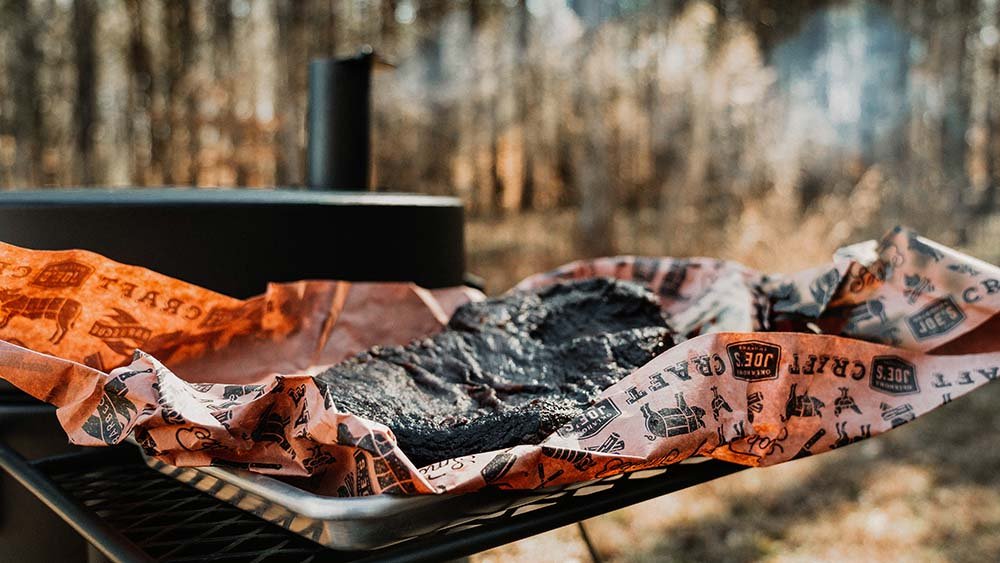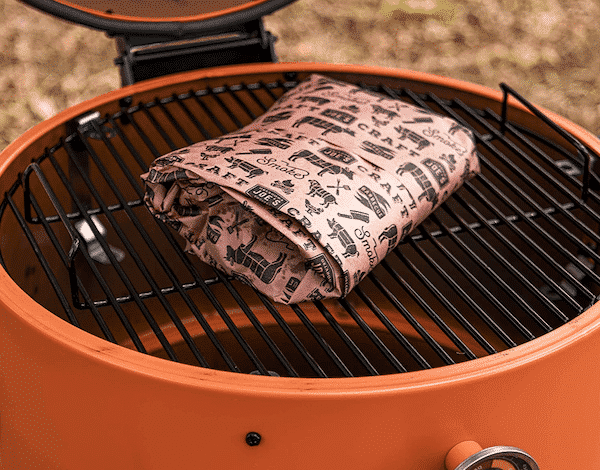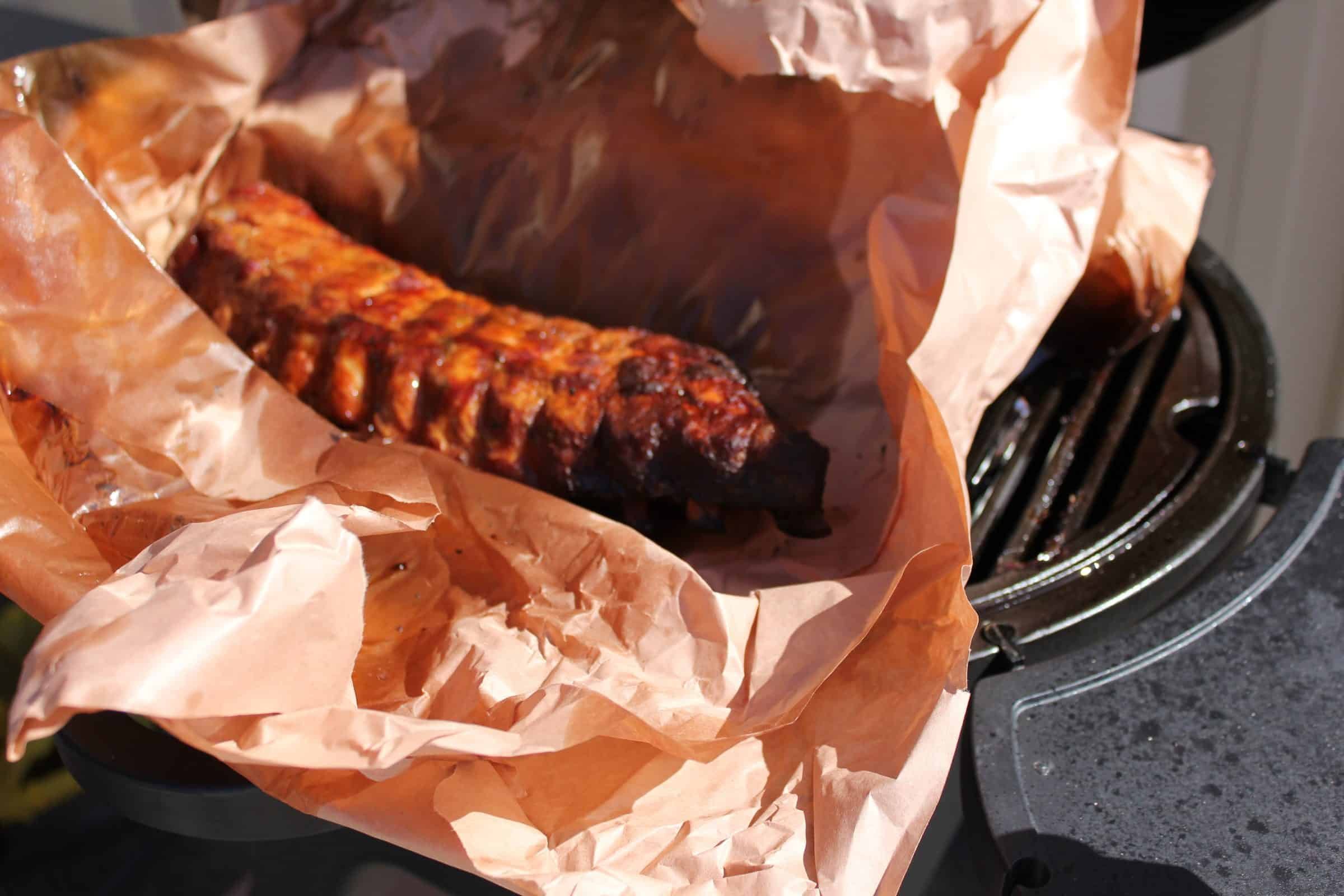Different Papers for BBQ
A Comprehensive Guide to Types and Uses
Discover > BBQ at Home > Different Papers for BBQ
For barbecue (What wine goes well with barbecue?) aficionados, success hinges not only on meat selection, marinade, and grilling methods but also on the type of paper used. The choice between butcher paper, parchment paper, and aluminum foil can dramatically affect your dish's flavor, texture, and appearance.
Each paper type, including freezer paper and pink butcher paper, offers unique benefits for smoking meat. Whether you wrap meat or line trays with peach butcher paper or other types, it can directly impact your cooking process and final product. This piece provides insights into these different papers, including butcher and parchment paper, and their use cases in barbecuing, particularly when cooking pork butt and pork ribs. (What wine goes well with pork ribs?)
Additionally, it explores the benefits of peach-treated butcher paper for wrapping meat and the role of paper in handling raw meat and smoked meat. So, before your next barbecue, make sure to consider these factors for an unforgettable grilling experience.
Varieties of BBQ Paper
When it comes to barbecuing, several types of paper can be used to achieve the best results. Each has its purpose and advantages. In this section, we will discuss common BBQ papers such as parchment paper, butcher paper, aluminum foil, and wax paper.
Parchment Paper: This type of paper is typically used for baking, but it also works well for barbecuing. Parchment paper is made from wood pulp and offers a non-stick surface for cooking. It is great for wrapping food items like fish, vegetables, and even small cuts of meat, as it prevents sticking and helps the food cook evenly. While parchment paper is heat-resistant, it should not be exposed to direct flames.
Butcher Paper: Made from sturdy kraft paper, butcher paper is known for its ability to maintain moisture in food during the barbecuing process. This type of paper is excellent when working with larger cuts of meat, such as brisket, as it allows the meat to breathe and prevents it from becoming overly soggy. BBQ enthusiasts often favor butcher paper as it allows the meat's smoky flavor to be retained while still offering a barrier against direct heat or flames.
Peach-treated butcher paper: also known as peach paper or BBQ paper, is a versatile, FDA-approved product widely utilized in barbecuing and smoking meat. Its moisture-resistant properties facilitate easy cleanup post-cooking and effective heat retention keeps the meat warm for an extended period. Additionally, being disposable, it's both environmentally friendly and convenient for storing leftovers. Its uses also include wrapping sandwiches, lining food trays, and covering tables at rustic-themed events.
Aluminum Foil: A popular choice for barbecuing, aluminum foil provides a flexible and heat-resistant surface. It can be used to wrap foods for grilling or smoking, or as a barrier to prevent sticking. Aluminum foil is particularly helpful in cooking more delicate items like vegetables or fish. It is also convenient, as it can be easily molded around food for a tight seal. However, some people are concerned about the potential health risks associated with using aluminum foil in cooking.
Wax Paper: While less common than the other types of paper mentioned, wax paper has its uses in BBQ cooking. Primarily, it is ideal for wrapping food items before storing them in the fridge or freezer. Wax paper is coated in wax, which makes it moisture-resistant, but this coating can also melt when exposed to high heat. As a result, wax paper is not suitable for direct heat cooking and should only be used for storage purposes in the context of barbecuing.
Different types of BBQ paper, namely parchment paper, butcher paper, aluminum foil, and wax paper, cater to diverse cooking methods and foods, each having unique advantages for BBQ cooking. The choice of BBQ paper should align with the specific cooking context and personal taste.
Types of Food Material Suited for Different BBQ Papers
Meat
When using barbecue papers, selecting the right type for meat helps retain flavor and ensure optimal cooking. For beef, pork, and poultry, thicker parchment paper or non-stick grilling paper works best because these materials can withstand high temperatures and avoid tearing. The thicker paper also prevents the juices from leaking, thus preserving the flavor.
Seafood
For delicate seafood like fish, shrimp, and scallops (What wine goes well with scallops?), non-stick, heat-resistant silicone mats or frogmats are suitable. Using a silicone mat ensures that the seafood won't stick to the grill, and it provides a consistent heat distribution for even cooking. Less durable papers, such as wax or thin parchment, can break easily with the fragile nature of seafood, so it's best to avoid those types. They’re not ideal for cooking over open flame.
Paper Type Suitable For Parchment Beef, Pork, Poultry Non-stick Beef, Pork, Poultry Silicone Mat Seafood
Vegetables
Grilling vegetables like peppers, zucchini, and asparagus is made easier with the use of a non-stick grilling mat or mesh. These mats prevent small tender pieces from falling through the grill grates while still achieving the desirable smoky flavor. Vegetables tend to cook faster, so avoid using thicker papers that can block heat energy.
Exotic Items
For exotic items like halloumi cheese, tofu (how long does tofu last?), and fruit, choose BBQ papers that can support the required cooking temperatures without sticking. Non-stick grilling paper or silicone mat is most suitable for these items. These materials can withstand varying temperatures and prevent any damage or sticking to the grill.
Factors Influencing Choice of BBQ Paper
Selecting the appropriate BBQ paper revolves around several crucial elements, such as its ability to withstand heat, the potential health implications, and its role in augmenting the flavor of the food.
Heat Resistance
Heat resistance is an essential quality for BBQ paper since it will be exposed to high temperatures during the grilling process. BBQ papers must withstand these temperatures without burning or breaking apart. Some common options include:
Parchment paper: Withstands heat up to 420°F (220°C), making it suitable for low-temperature grilling.
Butcher paper: Also known as peach paper, it can handle temperatures up to 350°F (177°C).
Aluminum foil: Tolerates temperatures up to 1200°F (649°C), making it ideal for high-temperature grilling.
Health Impact
It's crucial to focus on the health aspect when selecting BBQ paper. Some materials may potentially release harmful substances when exposed to heat. Be cautious of the following:
Chemical coatings: Avoid papers with non-stick or heat-resistant coatings that could release toxic substances when heated.
Bleached paper: White paper products are often bleached, which can create concerns about harmful chemicals being released during grilling.
Flavor Enhancement
Certain BBQ papers can help enhance the flavor of your grilled food. Some choices include:
Parchment paper: Preserves food's natural moisture and prevents the food from sticking to the grill, resulting in a delicate and tender texture.
Butcher paper: Allows the meat to breathe while cooking, which helps to create a delicious bark on smoked meats (What wine goes well with smoked meats?) like brisket.
Aluminum foil: Traps moisture, tenderizing the food and intensifying flavors, especially when combined with marinades and seasonings.
Popular Brands of BBQ Paper
Franklin Barbecue Pit Butcher Paper: A name synonymous with barbecuing in Texas, Franklin's BBQ Butcher Paper is an excellent choice for your BBQ needs. Known for its breathability and strength, it's perfect for wrapping brisket and other meats during the smoking process.
Bryco Goods Pink Butcher Paper Roll: A favorite among pitmasters, Bryco Goods offers food-grade, unbleached butcher paper that's not only great for BBQ but also for crafting and food presentation. Its high wet strength keeps your BBQ moist and tender.
Grill Beast Butcher Paper: Grill Beast’s butcher paper is famed for its heat resistance and durability. It's ideal for slow-smoking meats as it locks in flavor and moisture, creating a savory and juicy BBQ experience.
Environmental Impact of Different BBQ Papers
Recyclability
Several types of BBQ papers are designed with recyclability in mind. For example, aluminum foil and parchment paper can often be recycled if they are clean and free from food residue. Recycling these materials helps to conserve natural resources and reduce waste in landfills. However, not all recycling facilities accept these materials, so it's essential to check your local recycling guidelines.
In contrast, wax paper is generally not recyclable due to the wax coating that makes it resistant to moisture. This coating can contaminate the recycling process and must be disposed of in the trash.
Degradability
When it comes to degradability, some BBQ papers break down more easily than others. Parchment paper and wax paper are both made from paper pulp, making them biodegradable and compostable. They will eventually break down when exposed to natural elements and microorganisms.
On the other hand, aluminum foil is not as easily degradable. Although it does eventually break down in the environment, this can take a very long time, potentially hundreds of years. As such, it's important to recycle aluminum foil whenever possible to reduce its impact on the planet.
Carbon Footprint
The carbon footprint of BBQ papers is closely connected to their production and disposal processes. Parchment paper and wax paper come from renewable resources like wood pulp, making their production more sustainable than materials derived from non-renewable resources. Additionally, because these papers are biodegradable and compostable, their disposal has a smaller environmental footprint compared to non-degradable materials.
In contrast, the production of aluminum foil requires a significant amount of energy due to the mining and refining of bauxite ore used to produce aluminum. This results in a larger carbon footprint than eco-friendlier BBQ paper alternatives. However, recycling aluminum foil can help offset its environmental impact, as recycled aluminum requires far less energy to produce than extracting new material from raw resources.
Safety Tips When Using BBQ Paper
Fire Safety
It is essential to take precautions when using BBQ paper to ensure fire safety. When using BBQ paper:
Keep a fire extinguisher nearby.
Always monitor the BBQ area, never leave it unattended.
Ensure that the paper is not exposed to open flames or intense heat.
Keep the paper away from flammable materials.
Additionally, remember to follow the manufacturer’s guidelines on the BBQ paper’s safe usage.
Food Safety
BBQ paper can aid in cooking food evenly and safely. To ensure food safety:
Use food-grade BBQ paper specifically designed for grilling.
Make sure the paper does not come into direct contact with flame or intense heat.
Avoid using inked or printed paper, as chemicals can leach into the food.
Do not reuse speedy paper; discard it after one use to prevent cross-contamination.
Handling and Disposal
Proper handling and disposal of BBQ paper are necessary to maintain safety. Some essential tips include:
Wear heat-resistant gloves when handling BBQ paper to protect your hands.
Allow the paper to cool down before removing it from the grill.
Place used BBQ paper in a heat-resistant container before disposing of it in an appropriate waste bin.
Conclusion
The use of various types of paper for BBQ purposes is a major factor in determining the success of grilling and smoking sessions. The selection process of such paper should be guided by one's preference for flavor, appearance, and cooking technique. Factors such as moisture retention, heat resistance, and food safety must also be considered.
The most commonly used BBQ papers include parchment paper, butcher paper, and aluminum foil. Each type has its unique benefits, drawbacks, and applications, so experimenting to find the best option is recommended. Parchment paper offers a non-stick surface, which prevents meat from sticking and makes cleaning up easier; however, it may not be suitable for high-heat grilling. Conversely, butcher paper, which is commonly used for smoking meats, is excellent at retaining moisture and flavor while providing a more pleasant appearance due to its semi-translucent property.
Aluminum foil is a versatile choice for BBQ use, as it can be used for wrapping, grilling, or smoking food items. It provides excellent heat resistance, consistent cooking temperatures, as well as the ability to create a tight seal around food to lock in moisture and steam. However, it lacks breathability, which may affect the desired bark and texture of the meat.
Ultimately, the key to a successful BBQ experience lies in understanding the merits of different types of paper, matching them with the specific food items and desired outcomes, and adjusting techniques to achieve optimal results. Happy grilling!




